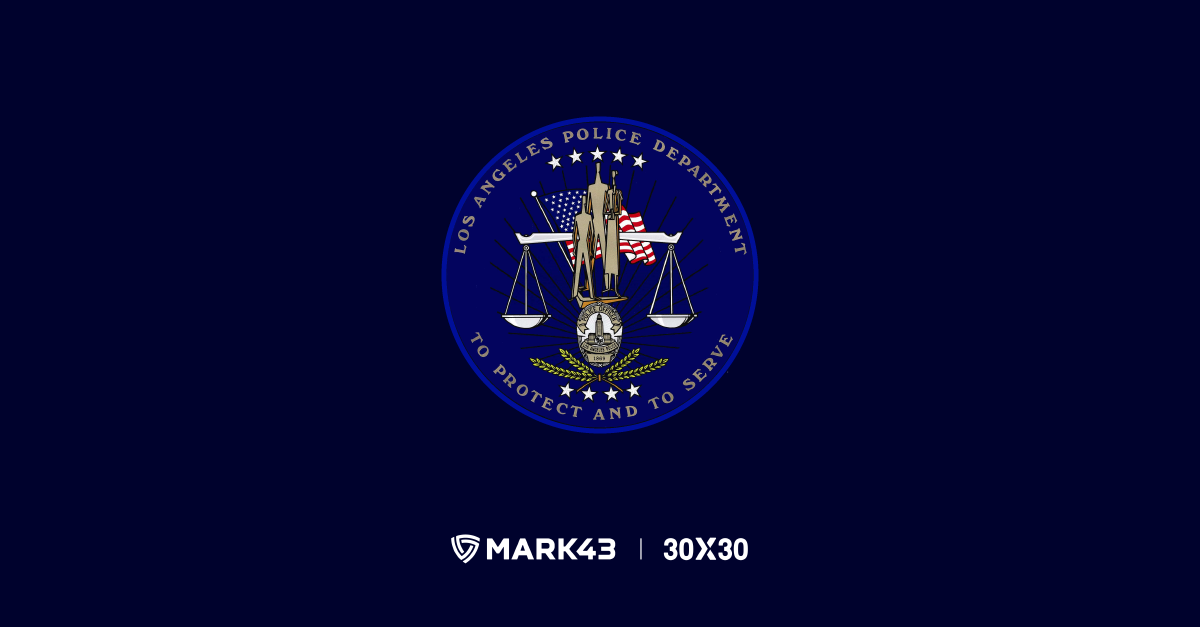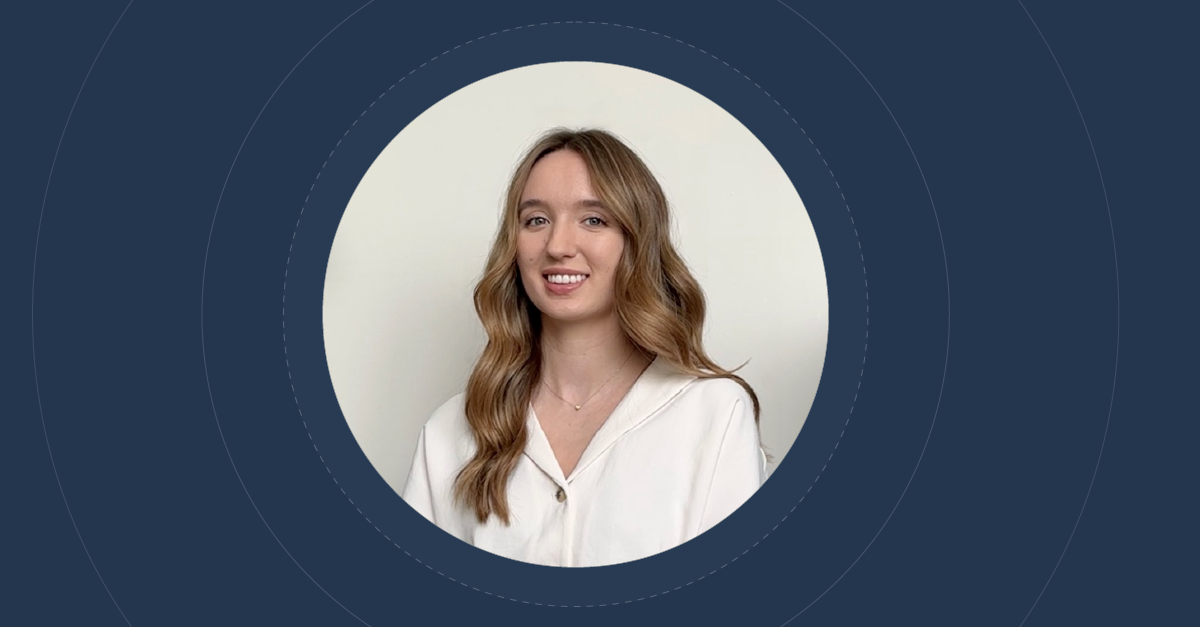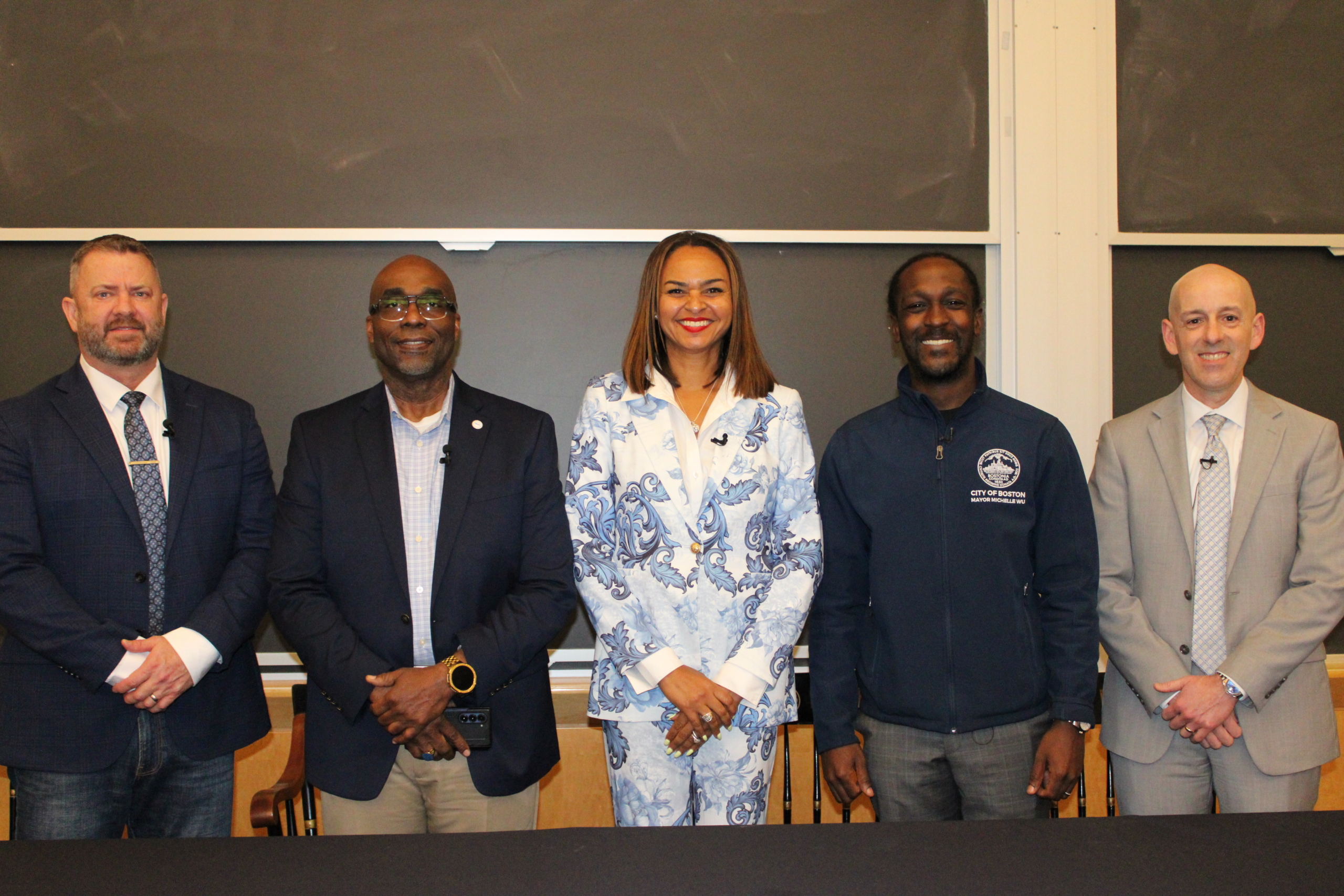
A leader in the recruitment and retention of women
As part of our commitment to supporting modern, diverse workplaces in public safety, Mark43 is a partner of the 30×30 Initiative, a coalition working to increase the representation of women in law enforcement recruit classes to 30 percent by 2030. As part of this effort, we have been highlighting an agency, chief, officer advancing the representation and experiences of women in law enforcement across the United States.
Commander Ruby Flores serves as the Los Angeles Police Department’s Diversity, Equity and Inclusion Officer where she leads the Diversity, Equity and Inclusion Group. She was appointed by Chief Michael Moore In December 2020, and is the first person to serve in this role. Prior to her appointment, she was the Commanding Officer of the LAPD Training Bureau, overseeing all recruit training and inservice training. Among the goals of the Diversity, Equity and Inclusion Group is to generate transformative ideas and experiences to create, promote, and foster cultural competency in policing, and to assist in ensuring the Department accurately responds to the needs of Department employees and the community. This includes prioritizing and supporting the LAPD’s effort to recruit and retain members from all segments of the community.
As part of that effort, the LAPD signed the 30×30 pledge on May 28, 221. She also serves as the President of the Los Angeles Women Police Officers and Associates (LAWPOA). We spoke with Commander Flores about her and the LAPD’s efforts to increase the recruitment and retention of female officers.
How did you come to be involved in the 30×30 Initiative?
I am the president of our women’s organization, LAWPOA, so the elevation of women is
something I was already advocating for. As I learned about the 30×30 Initiative and who is a part of it, I made a proposal to Chief Moore and our Board of Police Commissioners. Everyone was unanimously supportive, and they were all in for signing the pledge. Since signing the pledge, efforts to move forward and implement a lot of the recommendations are being taken seriously. That is the difference between having a hiring campaign versus having action and accountability behind it. Fortunately, we now have the research behind what we have been saying for years and years – that women make outstanding police officers. It is evidence-based, so I think that is what is grabbing people’s attention.
The Diversity, Equity and Inclusion Group
When Chief Moore named me the Diversity, Equity and Inclusion Officer, an office like this had never existed before. At first it was an ancillary job, to be done in addition to my role at the time as Commanding Officer of our Training Group. It soon became evident that if we are going to be successful on this endeavor, then it must be a full-time job. Also, if we are to show commitment to real change, then we have to do something bold. I suggested we be careful not to exclude women, or Lesbian, Gay, Bisexual, Transgender and Questioning (LGBTQ+) employees; and it grew to become the Diversity, Equity and Inclusion Group.
We are separate from the Training Bureau but I interact with them since so much of 30×30 relates to training and recruitment. My position is under the LAPD’s Office of Constitutional Policing and Policy, which provides me access to reach out to other offices to collaborate with on new initiatives.
Meeting the current recruiting challenges
We are all struggling with recruitment. The LAPD is composed of 18% women. We have hovered at that number for the last two decades, but we have had recruiting successes recently. In September of 2020, we had the first recruit class in the history of the LAPD that was over 50% women. The next recruit class was around 40% women. Working with the Recruitment and Employment Division and our LAWPOA board members, we are active in community service and going to recruiting events. Our Recruitment section led by Captain Aaron McCraney is phenomenal in terms of a directed, focused recruitment of women.
“You can’t be what you can’t see”
I always say, “You can’t be what you can’t see.” There are a lot of women who want to come on to the job, and it is so powerful when they see a woman in uniform, in a leadership position, of all different colors, shapes and sizes. As women we worry that we don’t fit the mold, so I try to talk about consistently and intentionally empowering women. It’s okay if you don’t fit the mold, we will get you ready.
We support them by offering to mentor them every step of the hiring process and I personally get involved so that other women police officers see that we are in this together and we are fully invested. Our social media platforms have great campaign efforts not only during Women’s History Month, but we feature women throughout the year. We feature women in all of our branding because it might be that one girl who sees that post and says, “I want to be that! I want to be her.”
Addressing officer retention challenges
It starts with understanding why officers leave. I have spoken to women about the reasons why they left; anecdotally it is tough for women who have husbands on the department and who don’t have their own child care. They balance the days off with their husband, but it is usually the woman who takes most of the time off.
Chief Moore is very empathetic and in tune with these issues. Some of what we are looking at is:
- Daycare Options: We want to have more women work in specialized assignments and hold leadership positions while creating a sense of balance for everybody. Balance is not just for women, this applies to men as well who now have to care for elders or others in their households.
- Flexible schedules: A flex schedule can open some doors and create a workplace where women will want to stay.
Helping to retain officers who are returning after having had children
Currently we are looking at our lactation policies. We have a great policy but a barrier I’ve come across is some female officers must either stop lactating or be considered light/restricted duty because they can’t maintain their required qualification with their weapon. Officers who are lactating often have a note from their doctor saying they should not qualify with their weapon because time at the range brings them into contact with the lead in the ammunition. So that leaves a lactating officer sitting inside because she can’t qualify. So I asked the Chief to pursue a policy that allows us to offer them qualification with lead-free ammunition. We often speak about elevating and advancing women, but this option shows that we are intentionally aware and trying to do all we can to enable them to perform in the same manner that men are.
“We really have to look at and change what this job is. If you look at Generation Z, the generation of 25-years olds we are recruiting, the two most important factors they value are diversity/inclusion and full access to leadership.”
What would you recommend other agencies do to increase women candidates?
We really have to look at and change what this job is. If you look at Generation Z, the generation of 25-years olds we are recruiting, the two most important factors they value are diversity/inclusion and full access to leadership
- Diversity and inclusion. I often talk about the value of inclusiveness and valuing our employees. There are many job opportunities in this department because we are a large agency, offering a variety of assignments. That is where we can attract people to LAPD versus a smaller agency, since this new generation really values diversity in their work assignments and people they work with.
- Full access to their leadership. They want to be involved. They ask questions. They ask, “Why?” We, as an organization, when looking at advancing women, have to understand that and realize they are not being defiant or insubordinate; they simply just want to know.
Intentional visibility
Intentional visibility of women in the department is huge, both internally and externally. The women in your department are your best recruiters. If they feel valued, they’ll likely reach down and recruit other women. We send out a lot of different women to hiring events who are on the job from varying assignments and ranks. For departments that don’t have a lot of women, be careful not to exhaust them because they will feel like they are just being used. If you get women that are passionate about it, they can be an asset you can call upon many times.
- We’ve also found that athletes make some of the most phenomenal police officers, and even better supervisors. We have great colleges and junior colleges in our backyard with phenomenal athletes, so we will go and speak to different athletic teams and recruit. Our advice is to get out there and go where the women are – in athletics at the university and junior college level or even sporting events.
- Lean on your affinity groups. Our affinity groups are actively involved in recruitment and mentoring to help maximize recruitment efforts.
Looking ahead: 30% by 2030
We are still making strides, still making firsts, but we have yet to have a female Chief of Police in the LAPD. When I recently spoke at Cal State LA graduation reception, I told them, “Someone in these seats here might be the first female LAPD Chief of Police” and afterwards one of the graduates came to me and told me I inspired her to join the department and said, “I’m going to be the first female LAPD Chief.”
Be sure to check out our interviews with the Fairfax County Police Department and Metropolitan Nashville Police Department Deputy Chief (ret.) Kay Lokey




